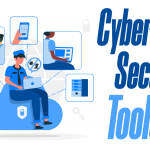Introduction
Many cyberattacks begin with a simple human trick, this tactic is known as social engineering the art of manipulating people into revealing confidential information or performing actions that compromise security. In 2025, social engineering remains one of the most effective tools for cybercriminals, responsible for over 80% of all data breaches according to Verizon’s Data Breach Investigations Report. Understanding how social engineering works is the first step to defending against it.
Table of Contents
What Is Social Engineering?
Social engineering is a psychological manipulation technique that exploits human trust rather than technical vulnerabilities. Hackers use it to deceive individuals into giving up sensitive data such as passwords, banking information, or access credentials. Instead of attacking systems, social engineers attack emotions curiosity, fear, greed, or urgency — to get victims to act without thinking.
Common examples include phishing emails pretending to be from trusted organizations, fake tech support calls, or even someone posing as an employee to gain physical access to secure areas.
The Psychology Behind Social Engineering
Cybercriminals understand human behavior deeply. They use psychological triggers to influence decisions:
- Authority: Pretending to be a boss, IT admin, or official to gain trust.
- Urgency: Creating panic, like “your account will be locked in 10 minutes.”
- Greed: Offering fake prizes or discounts to make users click malicious links.
- Fear: Threatening consequences for non-compliance or inaction.
By exploiting these emotional triggers, attackers bypass even the strongest firewalls and encryption systems. This is why cybersecurity training for employees is as critical as any technical defense.
Common Types of Social Engineering Attacks
1. Phishing
The most common form of social engineering, phishing involves sending deceptive emails or messages that appear legitimate. These often contain links to fake websites designed to steal login credentials. Platforms like PhishTank and Google Safe Browsing help verify suspicious links.
2. Spear Phishing
Unlike general phishing, spear phishing targets specific individuals or organizations. Attackers research the victim’s background through social media to craft highly personalized and convincing messages.
3. Pretexting
In pretexting, attackers invent a believable scenario (pretext) to obtain information. For example, they might impersonate HR staff asking for employee verification or IT support requesting password resets.
4. Baiting
Baiting uses enticing offers such as “free movie downloads” or infected USB drives labeled “confidential” to trick users into installing malware.
5. Tailgating (Piggybacking)
This attack occurs in physical spaces. A hacker might follow an employee through a secure door by pretending to have forgotten their ID card, gaining unauthorized access to sensitive areas.
Real-World Examples
One of the most famous social engineering attacks occurred when hackers used phishing emails to compromise John Podesta’s Gmail account during the 2016 U.S. election. Another major case was Twitter’s 2020 breach, where employees were tricked into giving access to internal systems, leading to massive account takeovers.
These incidents highlight that even tech-savvy individuals and large corporations can fall victim if proper awareness and verification protocols are not in place.
How to Protect Yourself from Social Engineering
1. Verify Before Trusting
Always double-check the identity of anyone requesting sensitive information. Call back using official contact numbers or visit the organization’s official website.
2. Think Before You Click
Never click links or download attachments from unknown sources. Hover over links to view their real destination.
3. Limit Information Sharing
Avoid oversharing personal details on social media. Attackers often use such data to craft believable scams.
4. Enable Multi-Factor Authentication (MFA)
Even if credentials are stolen, MFA adds an extra layer of security by requiring verification through another device.
5. Conduct Regular Training
Organizations should hold routine cybersecurity awareness programs. Tools like KnowBe4 offer employee phishing simulations and training to strengthen defenses.
The Role of Technology and AI in Prevention
Artificial Intelligence (AI) is becoming a powerful ally in detecting social engineering attempts. Machine learning algorithms can now analyze communication patterns and flag suspicious behavior. Email platforms like Microsoft 365 Defender and Google Workspace Security use AI to identify phishing emails and block them before they reach inboxes.
However, no technology can completely prevent human error. The strongest defense remains user awareness and vigilance.
Conclusion
Social engineering is not just a technical challenge; it’s a human one. In 2025, as technology becomes smarter, so do cybercriminals who exploit trust and emotion. Staying safe means staying skeptical question every unexpected message, verify every request, and never underestimate the value of your personal information.
By understanding how social engineering works and practicing cyber hygiene, individuals and organizations can build a human firewall the most powerful defense against the psychological tricks of modern hackers.











1 thought on “Social Engineering – Comprehensive Guide – 2025”